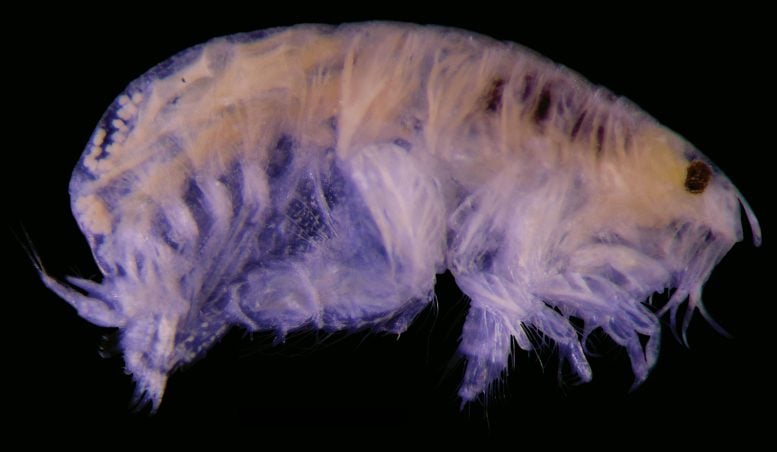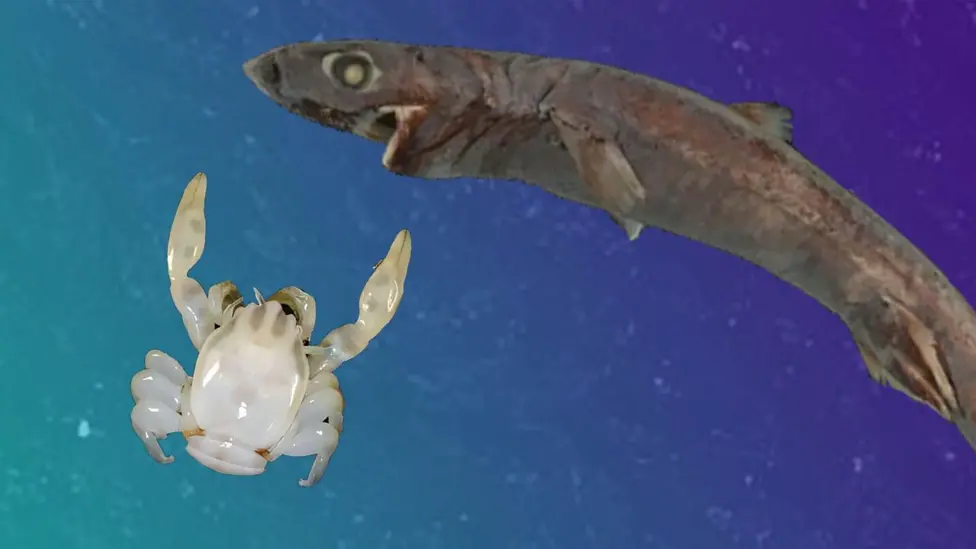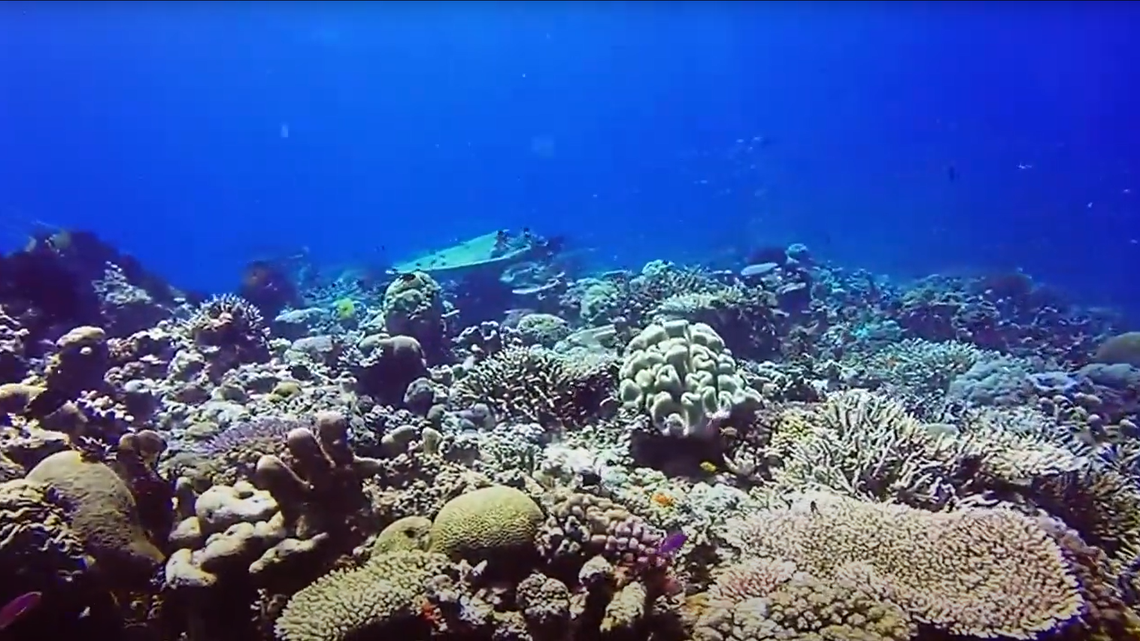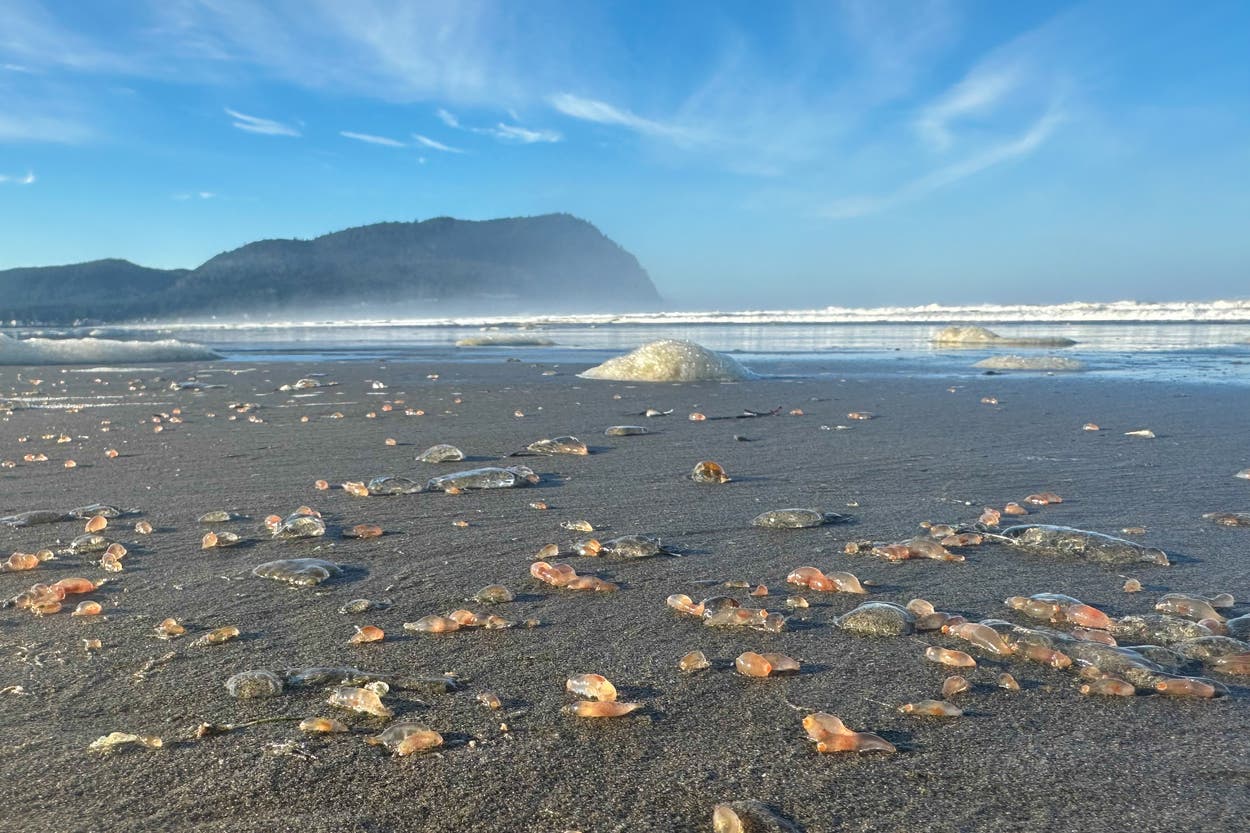Around the World in 80 Casts:
Global Aquatic Wildlife Discoveries - October 22, 2025
Global Aquatic Wildlife Discoveries - October 22, 2025
Your weekly journey through the planet's most extraordinary aquatic discoveries
Greetings, fellow explorers of the aquatic realm! Welcome to another thrilling edition of "Around the World in 80 Casts," where we dive deep into the most fascinating and bizarre creatures emerging from our planet's waters. This week has been absolutely extraordinary for marine discovery, with scientists unveiling everything from "popcorn" parasites in the deep sea to glowing sharks off Australia, and thousands of gelatinous pink creatures invading Oregon beaches. So grab your diving gear and prepare for an underwater adventure that spans from the deepest ocean trenches to coral reefs bursting with iridescent life!
The "Popcorn" Parasite: Deep-Sea Treasures from the Abyss

Our first stop takes us to the crushing depths of the world's oceans, where scientists from the Senckenberg Ocean Species Alliance have just unveiled fourteen remarkable new marine species that read like something from an alien world. The star of this deep-sea show is the parasitic isopod *Zeaione everta*, affectionately dubbed the "popcorn parasite" for its distinctive protuberances that bear an uncanny resemblance to freshly popped kernels of corn.
This extraordinary creature, discovered in the Australian intertidal zone, represents an entirely new genus to science. The female's back is adorned with these peculiar bumps that give it its popcorn-like appearance, making it one of the most visually striking parasites ever documented. The genus name *Zeaione* cleverly derives from *Zea*, the corn genus, celebrating this remarkable resemblance that initially caught researchers' attention.
But the popcorn parasite is just the beginning of this deep-sea treasure trove. Among the fourteen newly described species is *Veleropilina gretchenae*, a mollusk that holds the record for the deepest discovery in this collection, found at an astounding depth of 6,465 meters in the Aleutian Trench. This creature belongs to the ancient class Monoplacophora and represents one of the first species in its group to have a high-quality genome published directly from the holotype specimen.
Perhaps even more intriguing is the carnivorous bivalve *Myonera aleutiana*, discovered at depths of 5,170 to 5,280 meters—a full 800 meters deeper than any previously documented *Myonera* individual. This species made history as only the second bivalve ever to be anatomically described using solely non-invasive micro-CT scanning, generating over 2,000 tomographic images that revealed unprecedented details of its internal structures.
The research team also uncovered a fascinating ecological partnership when they discovered the tusk shell *Laevidentalium wiesei* carrying its own hitchhiker—a sea anemone attached to the shell's anterior side. This represents the first documented interaction of its kind in the genus *Laevidentalium*, showcasing the complex relationships that exist in the deep-sea environment.
Australia's Glowing Wonders: Bioluminescent Sharks and Ghost Crabs

From the deepest trenches, we surface to explore the remarkable discoveries emerging from Australian waters, where scientists from the CSIRO have unveiled two particularly captivating new species that seem straight out of a science fiction novel. The Gascoyne Marine Park, stretching from 15 meters to over 5,000 meters deep off Western Australia's coast, has proven to be a goldmine of biodiversity.
The West Australian Lantern Shark steals the spotlight with its mesmerizing bioluminescent capabilities. This 40-centimeter-long predator, roughly the size of a house cat, possesses large, expressive eyes and a belly that literally glows in the dark. The shark's bioluminescence comes from specialized photophores located on its belly and flanks, creating an ethereal light show in the depths where sunlight never penetrates. Researchers discovered this luminous marvel swimming at depths exceeding 600 meters, where its natural light display likely serves multiple purposes, from attracting prey to communicating with potential mates.
Equally fascinating is the newly discovered porcelain crab, a semi-transparent creature that has earned the nickname "ghost crab" for its see-through appearance. Measuring just 1.5 centimeters in length, this diminutive crustacean was found at a depth of 122 meters, where it lives in a remarkable symbiotic relationship with sea pen corals. Unlike typical crabs that use their claws to grab and pinch food, this species has evolved an entirely different feeding strategy, employing tiny hairs on its body to filter-feed on plankton as it drifts past.
Dr. Andrew Hosie, curator of aquatic zoology from the Western Australian Museum, explains that these porcelain crabs represent a fascinating example of evolutionary adaptation. "They use modified mouthparts with long hairs to sweep the water for small pieces of food such as plankton, rather than the typical crab method of grabbing and pinching food with their claws," he noted.
This discovery is part of a larger treasure trove from a 2022 CSIRO research mission that has already identified approximately twenty new species, including the Carnarvon flapjack octopus, various sea stars, and a scorpion fish. Scientists estimate that around 600 more new species await description and naming from this single expedition, promising years of exciting revelations ahead.
Papua New Guinea's Iridescent Jewel: The Beautiful Dwarfgoby

Our aquatic journey continues to the vibrant coral reefs of Papua New Guinea, where researchers have discovered what may be one of the most visually stunning fish species of the year. The *Eviota bella*, or Beautiful Dwarfgoby, represents a perfect example of nature's artistry compressed into a package barely one inch in length.
This remarkable fish was discovered during an extensive research project spanning from 2016 to 2025, conducted by marine biologists David Greenfield, Mark Erdmann, and Nesha Ichida across several coral reefs in Milne Bay province. The team encountered dozens of these small fish with their uniquely spotted eyes during scuba diving expeditions, initially mistaking them for known species until closer examination revealed their distinct characteristics.
The Beautiful Dwarfgoby earned its name from the Latin word "bella," meaning beautiful, and it's easy to understand why. The fish displays brilliant orange-brown coloring that seems to shimmer with iridescent qualities in the underwater light. Its most distinctive features include white-spotted eyes that surround the pupils like tiny stars, creating an almost jewel-like appearance. The fish's fins are edged with electric blue, adding to its spectacular visual appeal.
Beyond its stunning appearance, the Beautiful Dwarfgoby exhibits fascinating behavioral patterns. These fish are typically found in groups of three to thirty or more individuals on outer reef slopes exposed to clear water, at depths ranging from 13 to 50 feet. When approached by divers or potential predators, they demonstrate remarkable coordination, retreating as a group into the protective coral colonies that serve as their homes.
The species has been found exclusively in Milne Bay Province and Northern Province, neighboring regions of southeastern Papua New Guinea, suggesting it may be endemic to this particular area. This discovery adds to the growing body of evidence that coral reef ecosystems continue to harbor incredible biodiversity, much of which remains undiscovered.
Oregon's Pink Invasion: The Great Sea Cucumber Stranding

Our final destination brings us to the dramatic coastline of Oregon, where thousands of peculiar pink sea creatures have created one of the most unusual wildlife spectacles of the year. Seaside Beach, located about 80 miles northwest of Portland, became the stage for an extraordinary natural phenomenon when thousands of gelatinous pink sea cucumbers washed ashore across more than 3.2 kilometers of coastline.
These remarkable creatures, scientifically known as *Leptosynapta clarki*, are commonly called "skin-breathing" sea cucumbers due to their unique respiratory system and partially translucent appearance. Typically ranging from half an inch to six inches in length, these marine invertebrates normally live burrowed deep within the sand along the low tideline and in deeper offshore waters, making their mass appearance on the beach a rare and remarkable sight.
Tiffany Boothe, assistant manager of the Seaside Aquarium, described the scene as extraordinary: "They are literally littering the tideline." The phenomenon occurred due to a perfect storm of oceanographic conditions—the powerful combination of heavy surf and unusually low tides that dislodged these creatures from their sandy homes and deposited them en masse on the beach.
What makes this event particularly poignant is the fate that awaits these stranded creatures. Unlike many marine animals that can survive brief periods out of water, these sea cucumbers cannot return to their natural habitat on their own. They will inevitably dry up and die on the beach, but their sacrifice won't be in vain. Their bodies will provide essential nutrients for the beach ecosystem, feeding beach hoppers, beach fleas, and other invertebrates that inhabit the tideline. Interestingly, birds avoid eating them, leaving them exclusively for the smaller invertebrate community.
This species of sea cucumber has a range extending from northern California to the Gulf of Alaska, making them important components of Pacific Northwest marine ecosystems. The mass stranding phenomenon can occur whenever surf and tide conditions align perfectly, which might happen a few times per year or once every few years, depending on weather patterns and oceanic conditions.
The Endless Frontier of Aquatic Discovery
As we conclude this week's journey around the world's waters, these discoveries remind us that our planet's aquatic environments continue to surprise and amaze us. From the crushing depths where popcorn parasites thrive, to the bioluminescent displays of Australian sharks, from the iridescent beauty of Papua New Guinea's coral reefs to the dramatic strandings on Oregon's shores, each discovery adds another piece to the vast puzzle of marine biodiversity.
Scientists estimate that only a small fraction of the world's marine species have been formally identified and described, meaning that countless wonders still await discovery in the depths of our oceans, lakes, and rivers. Each new species discovered not only expands our understanding of life on Earth but also highlights the incredible adaptability and diversity of aquatic life.
These discoveries also underscore the importance of continued marine research and conservation efforts. As human activities increasingly impact aquatic environments, documenting and understanding these species becomes ever more critical for their protection and the health of entire ecosystems.
Until next week, keep your eyes on the waters around you—you never know what extraordinary creature might be lurking just beneath the surface, waiting to reveal the next chapter in our ongoing story of aquatic discovery!
Stay curious, stay amazed, and remember—the ocean's greatest secrets are still waiting to be unveiled!
